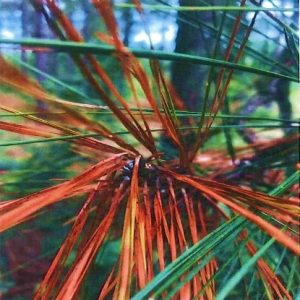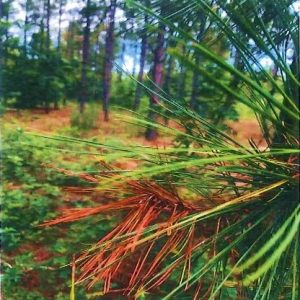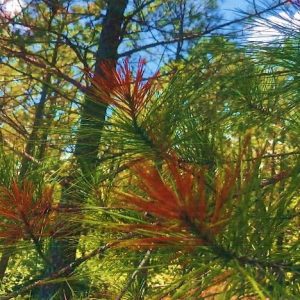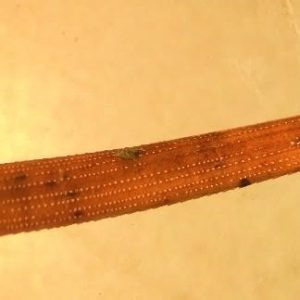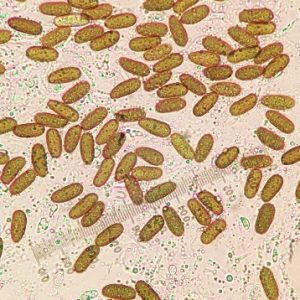Forestry

Diplodia tip blight is a common fungal disease caused by Diplodia sapinea (syn. Sphaeropsis sapinea). The fungus infects more than 20 different two- and three-needled pine species in landscape and forest settings. Mature trees that have been subjected to stressors, including drought, soil compaction, and poor planting conditions, are typically the targets of fungal infections. The disease can also seriously threaten new pine plantations, Christmas tree farms, and forest-tree nurseries.
Loblolly pine (Pinus taeda) is an economically important timber species native to the southern United States. It is the most versatile of all southern pines due to its ability to reproduce and grow on diverse sites. Loblolly pine has numerous ecological values, including stabilizing soil, providing food and habitat for numerous wildlife species, and carbon sequestration. However, there have been reports of diplodia tip blight causing one-third to complete defoliation of the crown to loblolly pine plantations in South Carolina and Georgia, respectively. As a result, it is important to identify and treat this fungus, as untreated stands can stagnate, decline, and be a source of future inoculum to surrounding trees.
Diagnosis and Identification
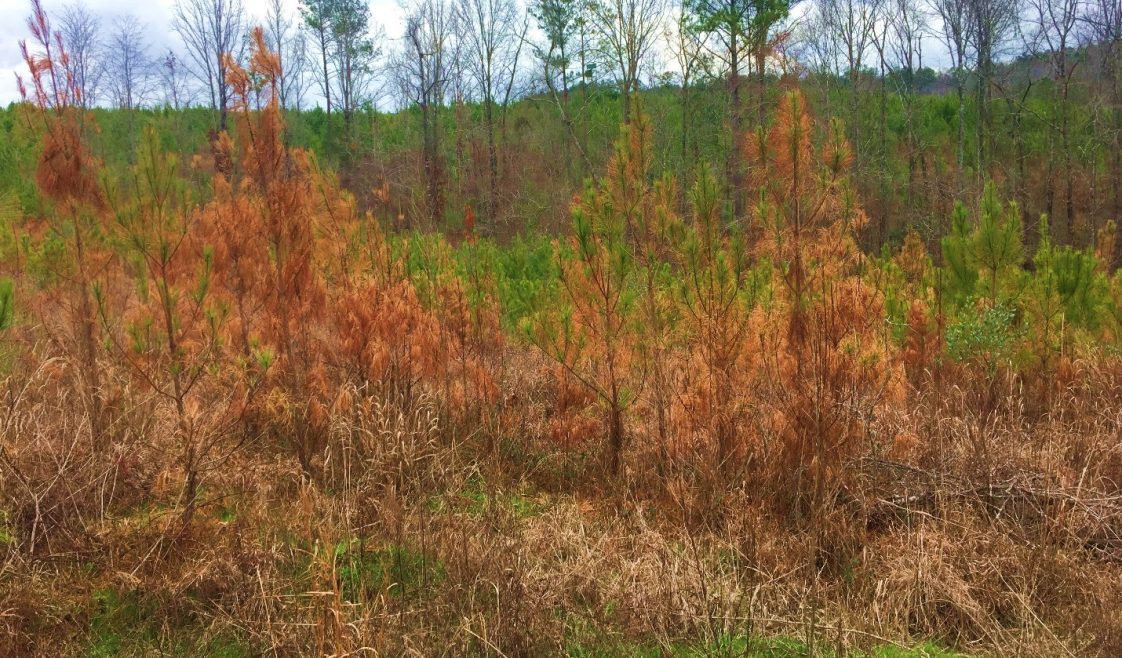
Figure 1. Loblolly pine plantation infected with diplodia tip blight in Upson, Georgia.
The disease is characterized by tip blight or dieback of branch tips. Infection usually starts in the lower half of the tree and moves upward with disease progression. Successive infections can lead to most of the tree turning brown, with entire branches dying (figure 1). The current year’s needles are the most susceptible and tend not to elongate and turn yellow to tan or brown (figure 2A). Where disease incidence is high, trees can lose their main leader (or stem) and eventually die (figure 1). In some cases, resin droplets are seen on the dead shoots. This fungus overwinters in infected dead needles, twigs, and cones on the ground or the tree. When the weather is wet, little black structures that create spores get covered in spores. These spores are then dispersed by the wind, rains, animals, insects, and pruning tools. Occasionally, the fungus causes cankers on the stems or branches of weakened trees. During the summer and fall, black fungal fruiting bodies called pycnidia appear at the base of the needles under the fascicle sheath (figures 2B and 2C). The symptomology can be confused for similar diebacks caused by pine shoot moth and European pine sawfly damage. However, differentiation between insect or fungal pests can be discerned by the presence of the insects themselves or by their feeding damage. Identification is only reliable when evidence of the characteristic pycnidia is recovered or identification of pathogen using molecular biological methods. As a result, submitting samples to a lab is needed for proper diagnosis.
- Figure 2A. Disease symptoms and reproductive structures showing (A) classic tip blight symptoms expressed by the loblolly pine trees.
- Figure 2A. Disease symptoms and reproductive structures showing (A) classic tip blight symptoms expressed by the loblolly pine trees.
- Figure 2A. Disease symptoms and reproductive structures showing (A) classic tip blight symptoms expressed by the loblolly pine trees.
- Figure 2B Sporulation of tiny black fungal fruiting bodies (pycnidia) on the infected needles.
- Figure 2C Microscopic ovoid-shaped aseptate conidia.
Control and Management Strategies for Landscape Settings
Management of tip blight is successful with proper stand management at the site. The following techniques can be taken to reduce or control the risk of tip blight disease.
Cultural Techniques
Select tree species that are adapted to site conditions to reduce tree stress. Steep slopes with shallow soils or sites with deep sand, for example, are particularly stressful and require the selection of more drought-tolerant species such as Pinus echinate and Pinus palustris Mill. Weeds and grasses should not compete with young trees as they might cause stress. As an alternative, consider mulching the tree’s drip line down to a depth of 3 to 4 inches. Don’t fertilize trees until there is proof of a nutritional deficit. Disease severity increases with the application of fertilizer. For example, nitrogen fertilizer may promote excessive and succulent shoot growth, which is conducive to disease development.
Avoid any activities that might damage the tree’s root system. For example, do not cut roots and avoid driving heavy equipment, such as vehicles, within the tree’s drip line. Finally, sanitation practices, such as removing dead twigs, branches, cones, litter, and dead trees, can slow the progression of the disease. When possible, consider burning infested material to keep the fungus from spreading.
Chemical Control
The application of fungicide treatments is effective for long-term disease management. However, due to the cost and application difficulties, it is recommended only for high-value trees. Several fungicides are labeled for diplodia, including chlorothalonil plus thiophanate-methyl (Spectro 90), thiophanate-methyl (Cleary’s 3336, Topsin M, T-Methyl, etc.), mancozeb (Protect DF, Penncozeb, Dithane, etc.), and copper hydroxide plus mancozeb (Junction). Refer to the label for specific rates, mixing instructions, and application methods. Fungicide applications should be made at bud break when candles are half elongated and newly emerging needles are 2 to 5 centimeters long. For additional questions, contact your local Extension office at aces.edu.
References
CABI, 2020. Sphaeropsis sapinea (Sphaeropsis blight). Invasive Species Compendium, Wallingford, UK: CAB International. www.cabi.org/isc.
Brookhouser, L. W., & Peterson, G. W. (1971). Infection of Austrian, Scots, and ponderosa pines by Diplodia pinea. Phytopathology, 61(4), 409-414.
Datta, D. (2021). Identification and distribution of fungal pathogens associated with loblolly pine defoliation and tree mortality in the southeastern United States. MS thesis. School of Forestry and Wildlife Sciences, Auburn University, USA.
Peterson G. (1977). Infection, Epidemiology and Control of Diplodia Tip Blight of Austrian, Ponderosa and Scotch pines. Phytopathology 67, 511-514
Swart, W. J., Wingfield, M. J., & Knox-Davies, P. S. (1987). Conidial dispersal of Sphaeropsis sapinea in three climatic regions of South Africa. Plant Disease, 71(11), 1038-1040.
Vuorinen, M., & Kurkela, T. (2000). Lophodermella sulcigena infection in Scots pine needles and tree nutrition. Forestry, 73(3), 239-246.
 Debit Datta, Graduate Student, Ecology and Evolutionary Biology of Trees, Biological Sciences, University of Notre Dame; Richard Cristan, Extension Specialist, Assistant Professor, Forestry, Wildlife, and Environment, Auburn University; and Lori Eckhardt, Professor, Forestry, Wildlife, and Environment, Auburn University.
Debit Datta, Graduate Student, Ecology and Evolutionary Biology of Trees, Biological Sciences, University of Notre Dame; Richard Cristan, Extension Specialist, Assistant Professor, Forestry, Wildlife, and Environment, Auburn University; and Lori Eckhardt, Professor, Forestry, Wildlife, and Environment, Auburn University.
New January 2024, Diplodia Tip Blight of Loblolly Pine: Symptoms, Causes & Management, FOR-2140


